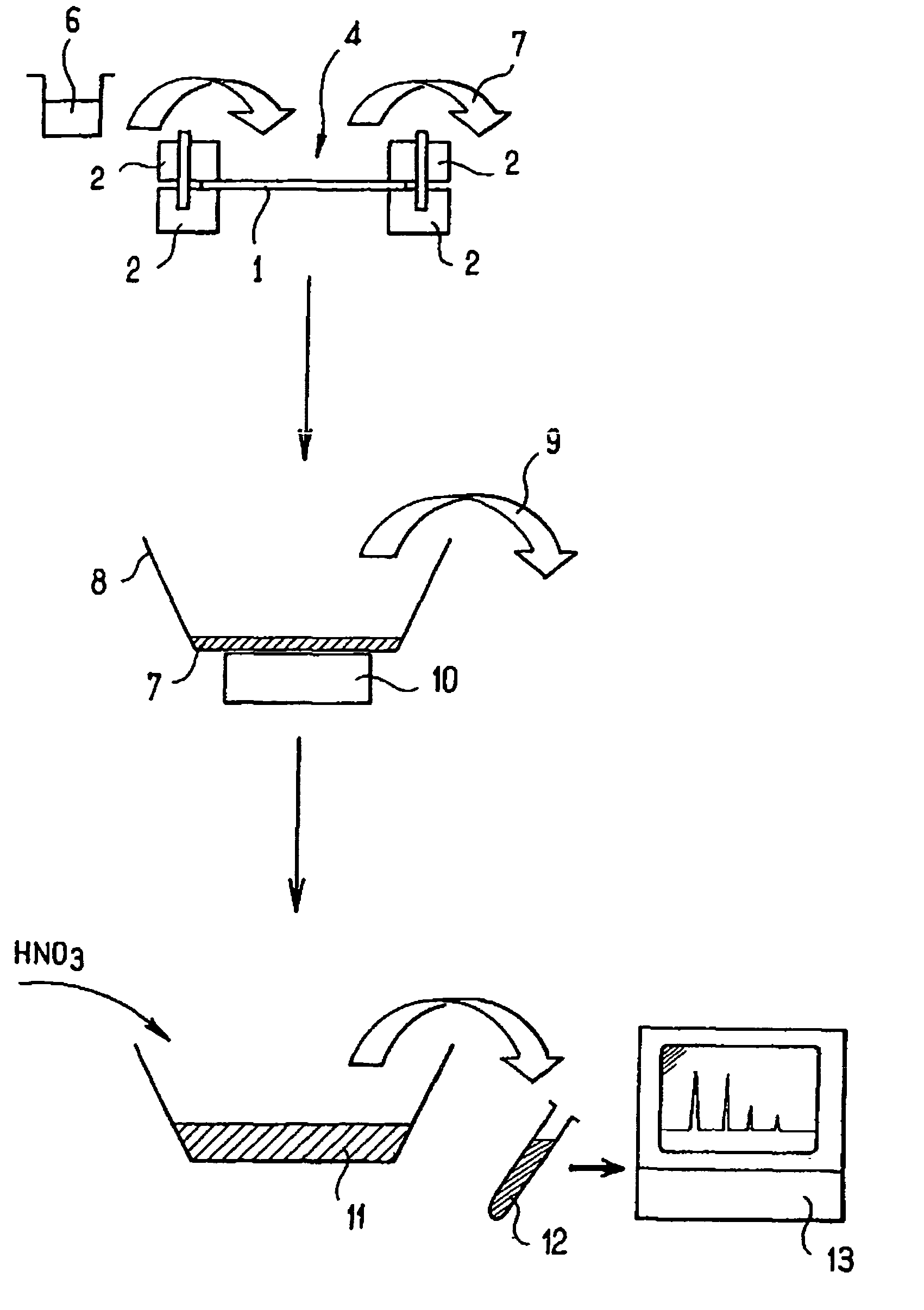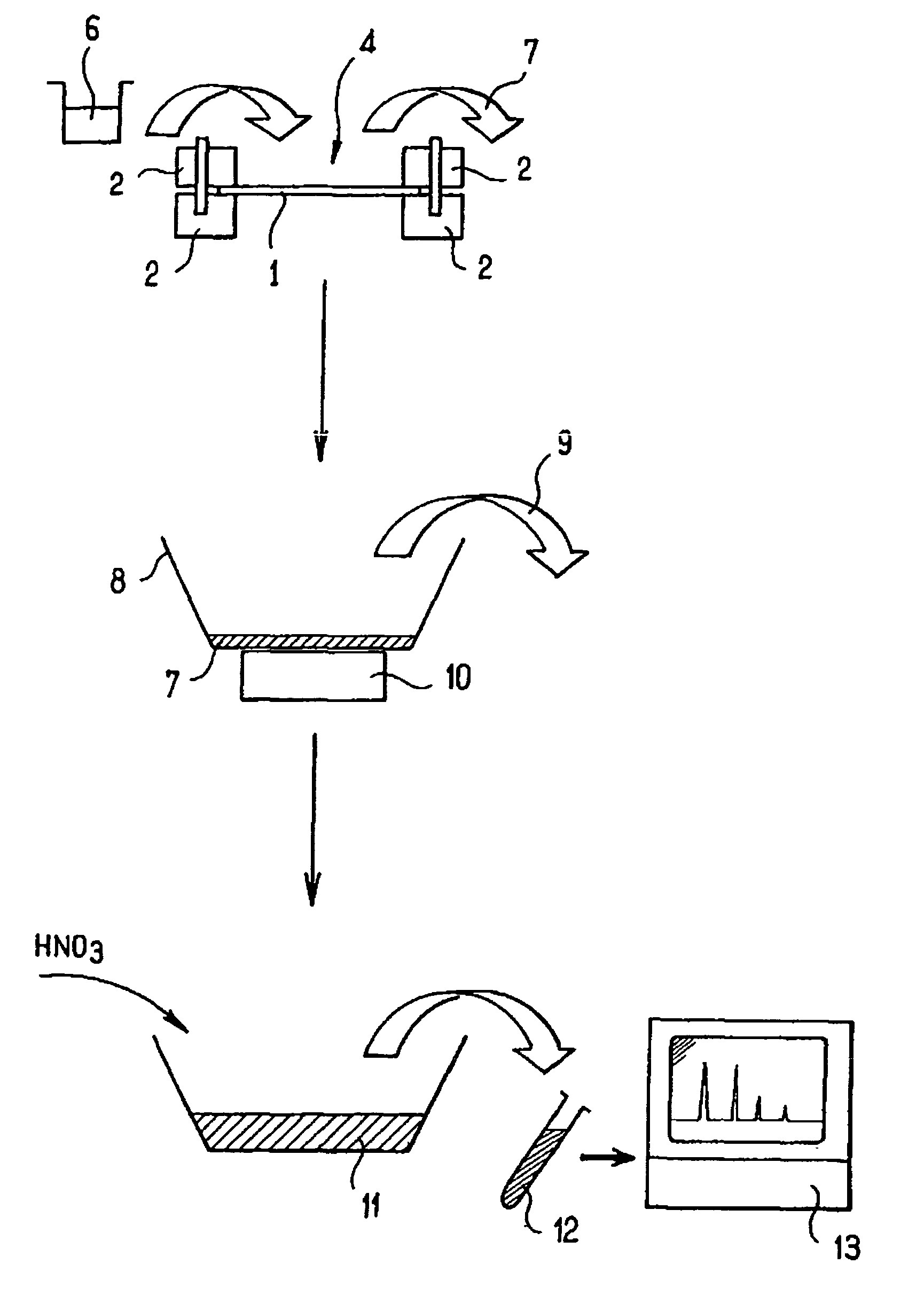Method for assaying elements in a substrate for optics, electronics, or optoelectronics
a substrate and electronic technology, applied in the field of assaying elements, can solve the problems of dielectric breakdown in future circuits, degrade electrical performance, crystal defect formation, etc., and achieve the effect of improving assaying accuracy and good assaying accuracy
- Summary
- Abstract
- Description
- Claims
- Application Information
AI Technical Summary
Benefits of technology
Problems solved by technology
Method used
Image
Examples
Embodiment Construction
[0040]The invention is based on selective evaporation of the species present in the sample so as to eliminate silicon while retaining the elements that are to be assayed. This enables the concentration of silicon to be reduced to a level compatible with assaying techniques other than AAS. It is thus possible to use faster assaying techniques such as ICPMS. It has also been verified that the silicon depletion obtained by evaporating silicon tetrafluoride using the method of the invention can be performed without losing any significant quantity of the elements that are to be assayed. The assaying method of the invention thus remains very accurate, reliable, and very fast when combined with ICPMS. Furthermore, when combined with an AAS technique, for example, the method has the advantage of improving detection thresholds.
[0041]In further accordance with the invention, the decomposition reaction can be as follows:
Si+HNO3+6HF→H2SiF6+NO2+H2O
[0042]Reference will now be made in detail to th...
PUM
| Property | Measurement | Unit |
|---|---|---|
| Temperature | aaaaa | aaaaa |
| Temperature | aaaaa | aaaaa |
| Temperature | aaaaa | aaaaa |
Abstract
Description
Claims
Application Information
 Login to View More
Login to View More - R&D
- Intellectual Property
- Life Sciences
- Materials
- Tech Scout
- Unparalleled Data Quality
- Higher Quality Content
- 60% Fewer Hallucinations
Browse by: Latest US Patents, China's latest patents, Technical Efficacy Thesaurus, Application Domain, Technology Topic, Popular Technical Reports.
© 2025 PatSnap. All rights reserved.Legal|Privacy policy|Modern Slavery Act Transparency Statement|Sitemap|About US| Contact US: help@patsnap.com


